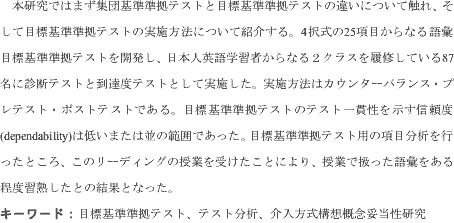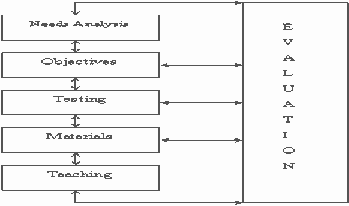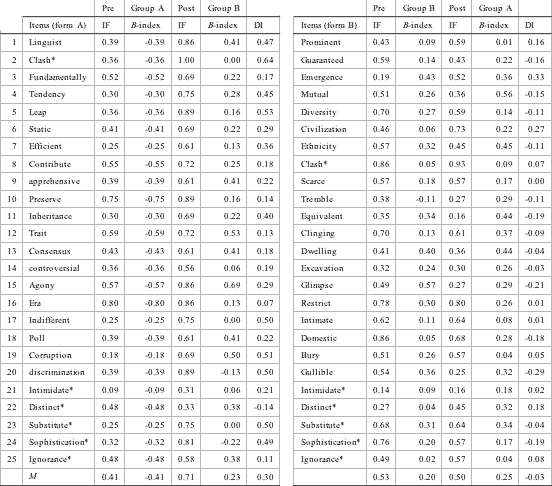May. 12 - 13, 2007. Sendai, Japan: Tohoku Bunka Gakuen University. (pp. 65 - 74)
by Takaaki Kumazawa (Kanto Gakuin University) |
|
|
Keywords: criterion-referenced tests, test analyses, intervention construct validity study  |
by Takaaki Kumazawa (Kanto Gakuin University) |
|
|
Keywords: criterion-referenced tests, test analyses, intervention construct validity study  |
[ p. 65 ]

[ p. 66 ]
| "If no diagnostic test is administered, teachers have no information on what students can do before instruction." |
| "If students know that a test administered as a diagnostic test is also going to be used as an achievement test, they may only study the parts of the class content that are on the test." |

[ p. 67 ]


[ p. 68 ]
Research questions|
1. A linguist studied how parents talked to their young children. |
[ p. 69 ]
[ p. 70 ]
| n | Minimum | Maximum | M | SD | Skewness | Kurtosis | KR 20 | φ | |
| Pre Form A (Group A) |
44 | 6 | 14 | 10.14 | 2.42 | 0.16 | -1.04 | .06 | .05 |
| Pre Form B (Group B) |
37 | 7 | 20 | 13.19 | 2.98 | 0.31 | -0.11 | 40 | .37 |
| Pre Forms A & B (Groups A & B) |
81 | 6 | 20 | 11.53 | 3.08 | 0.42 | -0.06 | ||
| Post Form A (Group B) |
36 | 11 | 25 | 17.75 | 2.91 | 0.05 | 0.53 | .49 | .46 |
| Post Form B (Group A) |
44 | 6 | 20 | 12.48 | 3.47 | 0.16 | -0.17 | .53 | .57 |
| Post Forms A & B (Groups A & B) |
80 | 6 | 25 | 14.85 | 4.16 | -0.09 | -0.42 |
[ p. 71 ]

1. To what extent were the two CRT forms dependable in the two administrations?
2. To what extent did the students master the vocabulary items on the two forms of the CRT?
[ p. 72 ]
| "It is recommended that teachers make CRTs before instruction so that successful teach-to-test instruction can be accomplished. It is also recommended that two forms of any CRT be developed in order to test a wider range of content in a counterbalanced design." |
[ p. 73 ]
References[ p. 74 ]